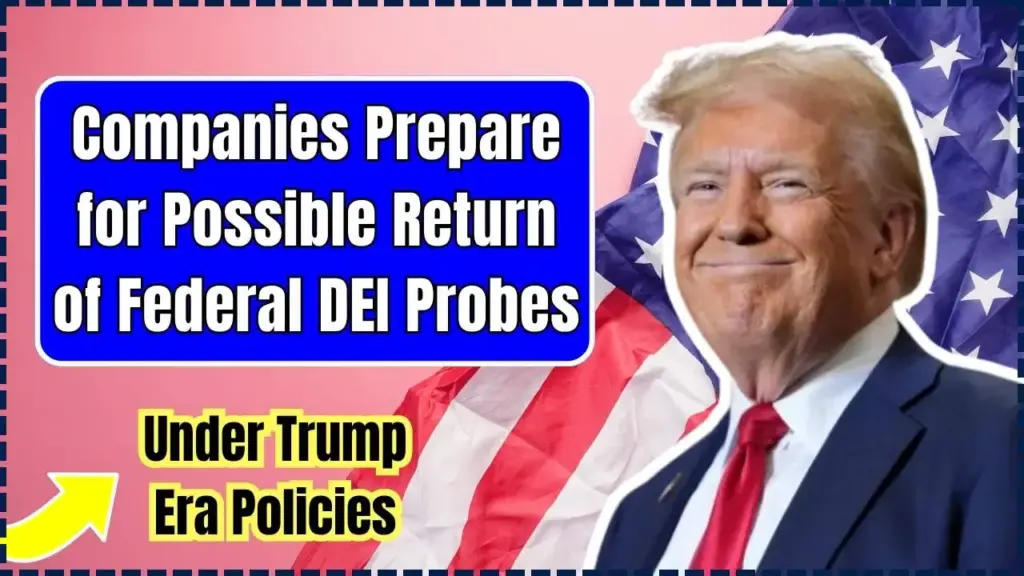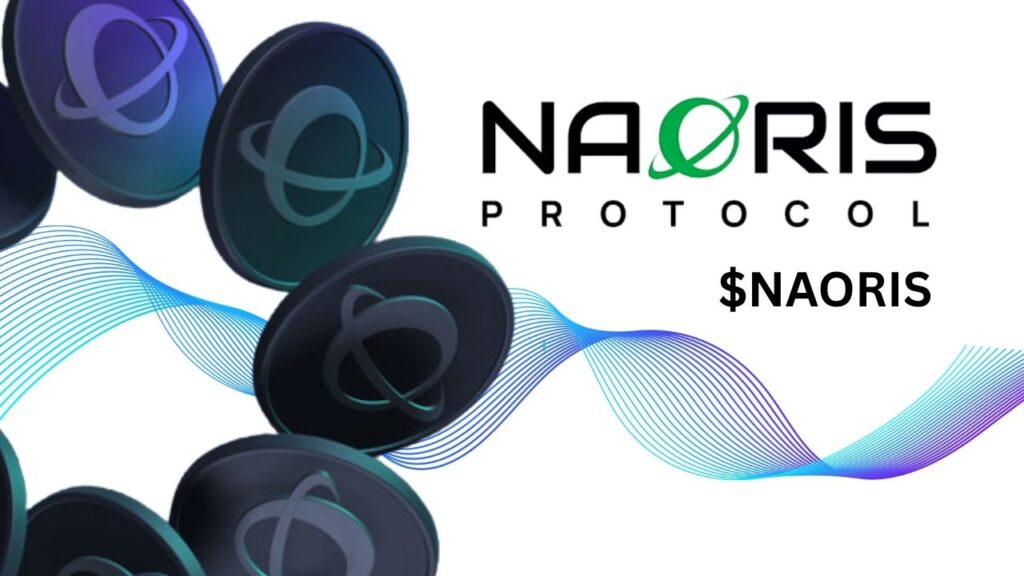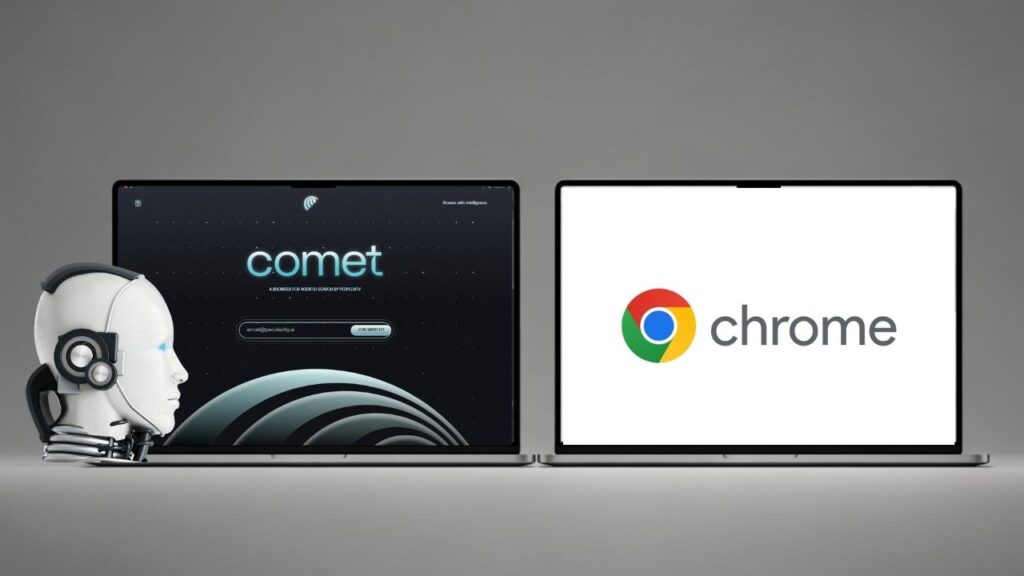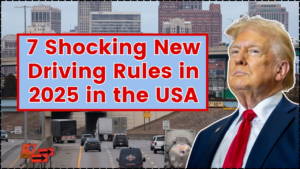U.S. companies are retooling their diversity, equity and inclusion (DEI) frameworks in anticipation of renewed federal scrutiny under the Executive Order 14173, which directs agencies to target what they define as “illegal DEI” programmes.

The policy shift has raised concerns across sectors about compliance, litigation risk and the future of corporate inclusion initiatives.
Table of Contents
Companies Prepare for Possible Return of Federal DEI Probes
| Key Fact | Detail / Statistic |
|---|---|
| Executive Order Signed | Jan. 21, 2025: EO 14173 titled “Ending Illegal Discrimination and Restoring Merit-Based Opportunity” |
| Certification Requirement | Federal contractors may need to certify that they are not operating “programs promoting DEI that violate… federal antidiscrimination laws” |
| Early Federal Probe | United States Equal Employment Opportunity Commission (EEOC) sent letters on March 17, 2025 to 20 major law firms requesting DEI-practice documents |
| State Responses | Attorneys General in 16 states issued guidance emphasising lawful DEI practices after EO 14173 |
Revised Federal Policy and Legal Stakes
What EO 14173 Requires
The Executive Order rescinds prior diversity mandates for federal contractors and directs agencies to identify “illegal preferences, mandates, policies, programmes and activities” tied to DEI.(wiley.law) Among other provisions:
- Contractors must potentially certify they do not run DEI programmes contravening federal antidiscrimination statutes.
- The federal government may employ the False Claims Act (FCA) to bring actions against entities that “falsely” claim compliance.
- The order leaves many key terms—such as what constitutes an “illegal DEI” programme—undefined, creating regulatory uncertainty.
Litigation and Enforcement Landscape
Although litigation is ongoing, the first case of note is National Urban League v. Trump, where on May 2, 2025 a federal district court in Washington, D.C. declined a preliminary injunction against enforcement of parts of EO 14173.(Seyfarth Shaw – Homepage) That decision indicates the government’s policy may withstand legal challenge and that companies cannot assume enforcement will be blocked.
Legal advisers warn that the undefined nature of key concepts and the broad certification requirement increase exposure to FCA and civil-compliance actions.(workforcebulletin.com) The potential for “qui tam” whistle-blower claims (private parties suing on behalf of the government under the FCA) adds another layer of risk.
Corporate and Sector-Level Response
Business Adjustments
Many companies—especially federal contractors—are conducting internal audits of their DEI schemes, focusing on whether recruitment goals, mentoring programmes, or employee resource groups (ERGs) create “preferences” based on protected traits.(Morrison Foerster) For example, some businesses are removing explicit numerical targets for race or gender in favour of broader inclusion language emphasising “skills and culture fit.”
“This shift is not about dismantling inclusion efforts, but aligning them with the law and business reality,” said Patricia Chen, chief human resources officer at a major U.S. corporation.
Sector-Specific Examples
In legal services, the EEOC’s March letters to 20 large law firms signalled that hiring, fellowship programmes and promotion practices based on race or gender are under review.(cwc.org) Meanwhile in education and higher-ed, compliance officers are evaluating whether diversity scholarships, race-based admission pipelines or staff-diversity goals might trigger federal review.
State and Local Dynamics
Some states have responded independently. “Blue states” (traditionally more favourable to expansive DEI mandates) issued guidance reminding employers that lawful DEI practices remain compliant if they focus on broad outreach, standardised assessments and inclusive cultures—not quotas or preferences.(Brightmine US) These responses indicate a patchwork state-federal ecosystem in which legal risk varies by contract, funding source and jurisdiction.
Balancing Inclusion, Risk and Reputation
Navigating the Tension
Companies face a dual challenge: maintaining employee morale and inclusive culture while reducing regulatory and legal exposure. Many organisations are shifting from “set a target for X% diverse hiring” to “expand candidate sources, standardise evaluation, build inclusive leadership.”
“There’s still a business case for diversity—innovation, talent retention, global competitiveness. The question now is how you achieve that without stepping outside legal bounds,” said Dr. Anya Sharma, retail-and-workforce researcher at the Wharton School of the University of Pennsylvania.
Reputational Implications
Public announcements of scaled-back DEI commitments carry potential reputational risks: investors, employees and civil-society stakeholders may view them as backsliding. On the other hand, a high-profile federal investigation could harm investor confidence and brand reputation. Firms must therefore consider both legal risk and communications risk.
Related Links
Eligible New Yorkers Could Receive $400 Inflation Refunds Soon — Check Your Mailbox
What Should Employers Do?
Experts recommend an action plan to address compliance and strategy:
- Conduct a privileged audit of all DEI-related practices, identifying programmes tied explicitly to protected categories (e.g., race, gender, national origin) and evaluating their legal defensibility.
- Document decision-making around hiring, promotion, training and supplier diversity—especially where protected traits factor into decisions—to support business rationale if scrutinised.
- Reframe DEI language and programmes: emphasise broad talent pipelines, inclusive culture, mentoring and skills-based criteria rather than quota-style targets.
- Stay informed on federal guidance from the EEOC, OFCCP and DOJ, and monitor state laws, contract changes and litigation trends.
- Craft a communications plan for stakeholders that explains how the company balances inclusion, equity and legal compliance.
Looking Ahead: A New Era of DEI Oversight
Legal analysts expect enforcement activity to ramp up in 2026 as agencies finalise model contract clauses and investigations begin in earnest. Some companies may seek to challenge EO 14173 further in court, but current precedent suggests the regulatory climate will remain stringent.
The broader implication: DEI is no longer solely a corporate-culture initiative—it has become a regulatory risk and strategic business decision. Whether companies adapt proactively or reactively will influence their legal exposure, workforce dynamics and public perception in the years ahead.
“The companies that succeed will be those that integrate inclusion with compliance, not treat them as separate boxes,” said Karen Tomaszewski, senior analyst at Morningstar Research.



















